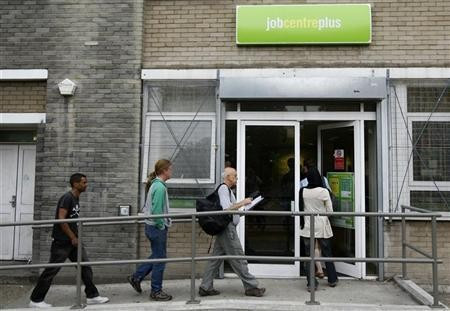UK Labour Data Explained: How Unemployment Can Drop While Claimant Count Spikes

On the surface there appears to be a baffling paradox in official labour market statistics, in that unemployment can go down while the claimant count for Job Seekers Allowance (JSA) goes up - but how can we arrive at this seemingly warped situation?
It can be seen in the latest figures for the UK labour market from the Office for National Statistics (ONS), which compiles the leading research in this field.
November's Labour Market Statistics release shows that in the three months to September unemployment fell to a rate of 7.8 percent as the claimant count soared by 10,100.
ONS economists define an unemployed person as:
- without a job, have actively sought work in the last four weeks and are available to start work in the next two weeks or;
- out of work, have found a job and are waiting to start it in the next two weeks.
Not all people who count as unemployed will claim JSA.
Someone may not be eligible because they have savings to live off, or have had a redundancy windfall with which they can pay their bills.
Once this runs out, and if no employment has been found, this individual may turn to the dole as a source of income.
You may also not be eligible if you are someone's dependent. For example, if you are out of work but your partner, with whom you co-habit, is in full time employment and their salary meets a certain threshold then you would not be entitled to claim JSA.
Other unemployed people may derive an income from illegitimate means, such as cash in hand work or the black market, and so not make a JSA claim.
It is also possible for you to fall in the employed category even if you claim JSA.
"Some JSA claimants will not be classified as unemployed. For example, people in employment working less than 16 hours a week can be eligible to claim JSA depending on their income," says the ONS guide on how to interpret its labour market data.
There are also some JSA-exempt full-time students who fall into the unemployment category.
"A common misunderstanding is to assume that all full-time students are in the economically inactive category," says the ONS guide.
"This is incorrect. A full-time student with a part-time job will be recorded in the employment figures. Students who have been looking for a job within the last four weeks and who would be able to start work within the next two weeks would be counted as unemployed, even if they are only looking for part-time work."
Another important thing to note when looking at the ONS labour market data is that employment is not a measure of the number of jobs.
For example, one person with three jobs will be counted once only in the employment figures.
"A common misinterpretation is to report that the estimates show how many jobs have been created or how many job losses have occurred. ONS does not produce any estimates for job creation or job losses," says the ONS guide.
---
Follow @shanecroucher
© Copyright IBTimes 2025. All rights reserved.






















